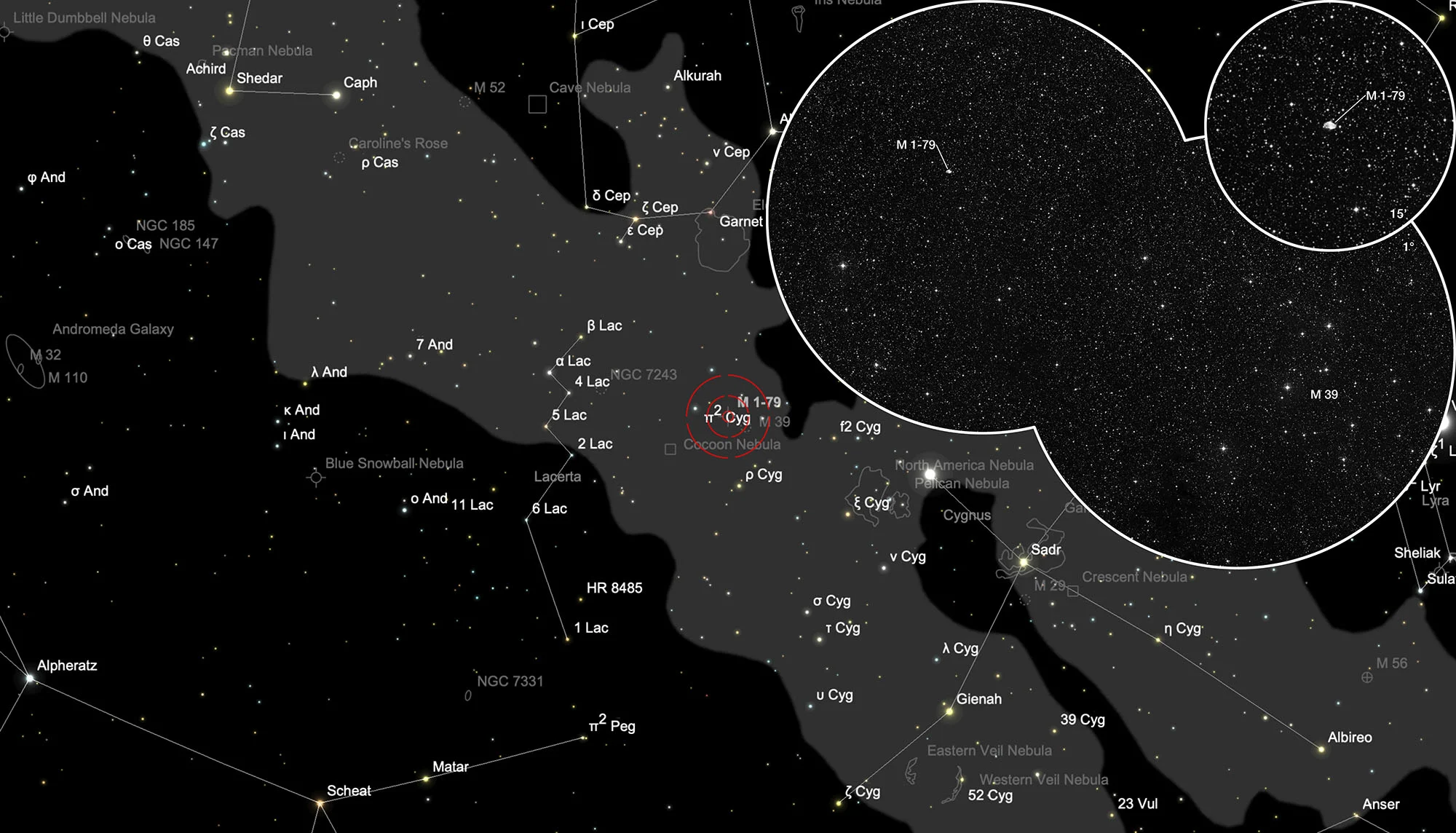Planetary Nebula Minkowski 1-79

History
The planetary nebula was discovered in 1946 by the German-American astronomer Rudolph Minkowski. He detected objects with little or no continuous H-α spectrum on objective-prism survey plates obtained by W. C. Miller using the 10-inch telescope at Mount Wilson. Further examination of its appearance on direct photographs, taken at the Newtonian focus of the 60-inch or 100-inch telescope on Mount Wilson, revealed its nature as a planetary nebula. [397]
Physical Properties
M 1-79 seems to have two different axes of polar symmetry in three-dimensional space which suggests that it had not maturated in a simple way. It appears as a PN with an elliptical central part and a bipolarity in the outer regions. It shows an overall point-symmetry along the edges but not when considering details of its inner structure. There are indications that a binary central star system is responsible for this shape. Both size and the expansion velocities are not typical for bipolar PNe. Probably M 1-79 has not yet reached the phase of a «classical» bipolar PN. [503]
Simbad lists a visual magnitude of the PN with 19.11 mag, but that seems rather to be the one of the central star. SkySafari lists a visual magnitude of 13.3 mag. Distance is listed as 2652 pc. [141, 145]
| Designations | PN G093.3-02.4: M 1-79, PK 93-02.1, ARO 365, VV 268, VV'555 |
| Right Ascension (J2000.0) | 21h 37m 01s |
| Declination (J2000.0) | +48° 56' 12" |
| Dimensions | 33." (optical), 30." (radio) |
| Distance | 2.0 kpc |
| Radial Velocity | -24.0 ± 25.0 km/s |
| Expansion Velocity | 19.0 (O-III) 23. (N-II) km/s |
| C-Star Designations | AG82 435 |
| C-Star Magnitude | V: 19.11 |
| Discoverer | MINKOWSKI 1946 |
Finder Chart
The planetary nebula Minkowski 1-79 is located in the constellation Cygnus. As entry point for star-hopping one can use the loose open cluster Messier 39. The best observation time is from April to January.
